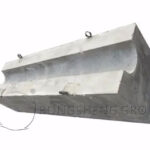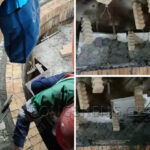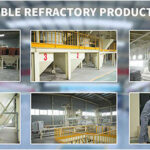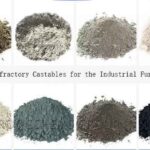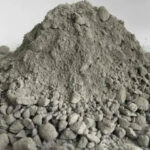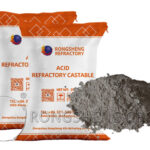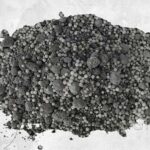Unshaped refractory castables and castable preforms have been widely used by more and more high-temperature industrial kilns due to their advantages of convenient, fast construction and low labor intensity. However, many enterprise users have found that refractory castables or preforms have found some abnormal phenomena during storage or maintenance, such as chalking, white hairs, and so on. So, how to solve the white hair and chalking on the surface of refractory castables preforms?
Firstly, let’s understand how these phenomena are formed.
In fact, these are caused by the contact of high-alumina cement hydration products in refractory castables with acid gases in the atmosphere. As the moisture in the castable evaporates, salt substances continue to migrate and precipitate to the surface, and then slowly aggravate the damage process of the refractory castable. We will analyze these phenomena today. Pulverization occurs during the storage of preforms made of cement-containing refractory castables. Some of them grow “white hair” on the surface, commonly known as white alkali, which causes the pulverization of the surface of the castable. In severe cases, the strength of the castable decreases.
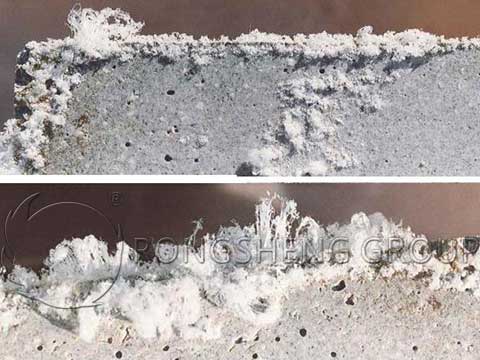
Several Phenomena on the Surface of Refractory Castables after Construction
Carbonation of Castables
Carbonation of high-alumina refractory castables is often considered to be one of the main reasons that lead to the decrease of castable structure and spalling. The high-alumina cement-bonded refractory castable is exposed to the air, and the hydration products therein react with the CO2 gas in the air to undergo a carbonation reaction. In addition, refractory castables are more likely to undergo carbonation under high humidity conditions and compared with dense castables, lightweight castables with high water content are easier to pulverize. This shows that in the presence of water, the hydration product interacts with the CO2 acid gas, and the PH value of the liquid in the single pore of the phase drops sharply, which makes all the new hydration organisms in the refractory castable become unstable.
Sulfation of Castables
Compared with the carbonation of high-alumina cement hydration products, the sulfation phenomenon has not attracted enough attention from the construction party and the user. In the atmosphere, in addition to the CO2 acid gas, there are also SO2, H2S, and other gases, which also have a strong corrosive effect on the hydration products of the matrix part of the high alumina cement castable. Eventually, this lead to powdering and peeling of the castable.
In addition to being sulphated by SO2 and H2S in the air, high-alumina cement hydrate may also interact with SO42- or H+ in the water source. As the activity and acidity of the two increase, the stability of the three high-alumina cement hydration products also decreases sharply.
Salt Precipitation Phenomenon of Castable
The salt precipitation phenomenon on the surface of refractory castables is another important factor that aggravates the structural damage of the castables. During the curing or natural drying process of refractory castable, some soluble carbonate, sulfate, chloride, phosphate, and other salt compounds will focus on the surface of refractory castable and crystallize with the evaporation of water. This phenomenon is often called salting out.
As the water evaporates from the surface of the refractory castable, these ions migrate and aggregate with the water molecules from the inside to the surface of the castable, or react with acid gases in the air on the surface of the castable. The salts formed after the hydrate reaction are focused on the surface. Finally, these salt compounds crystallized out due to exceeding the solubility in water.
In fact, all soluble salts containing crystal water include chloride, sulfate, carbonate, and so on. These salts all have the process of removing the crystal water, accompanied by the change of crystal form and volume change. These are some of the reasons that aggravate the pulverization, peeling, and lumps of the surface structure when the castable is cured in the air.
Solutions to the Phenomenon after the Construction of Refractory Castables and Preforms
- (1) Dry the castable as soon as possible after construction to remove water and eliminate the carrier of sodium salt in the cast, so that the alkali stays in the construction body and no longer migrates to the surface.
- (2) If the construction conditions cannot be dried in time, the pouring material should be sealed and the surface should be covered with plastic film to prevent moisture from migrating to the surface with alkali.
- (3) The refractory castable is made of refractory raw materials with low alkali content to increase the viscosity and fast hardening of the refractory castable. It can reduce the migration speed of sodium salt, strengthen quality management, and strictly control the amount of water added to the construction.
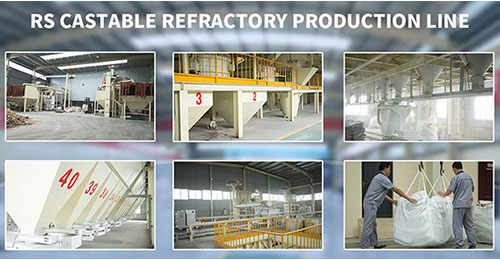
Rongsheng Refractory Castable Manufacturer
Rongsheng is a refractory manufacturer with an environmentally-friendly and advanced unshaped refractory production line. Rongsheng’s unshaped refractory production line has an annual output of 80,000 tons. Our refractory products have been sold to more than 60 countries and regions all over the world. Our customers of refractory castables have a high degree of recognition of our product quality and a high rate of return orders. Our monolithic refractory products can be customized according to the customer’s specific furnace requirements. We have rich experience in the field of wear-resistant refractory castables and refractory plastic products. In addition, he has rich experience in prefabricated refractory castables on the roof of the furnace. For more information about monolithic refractories, please contact us.

